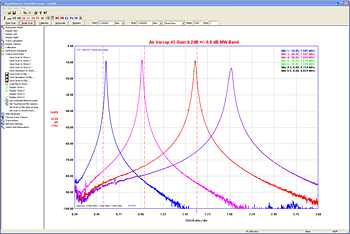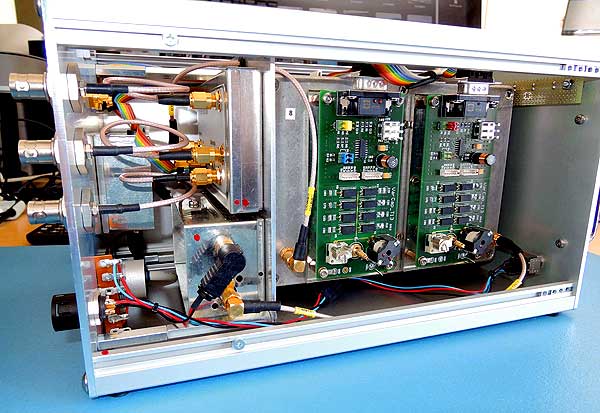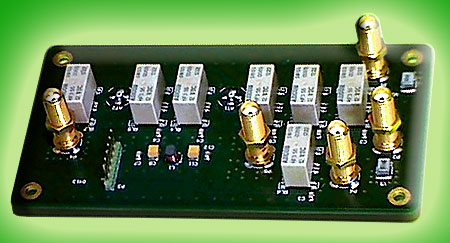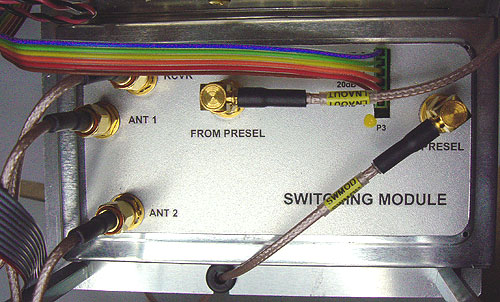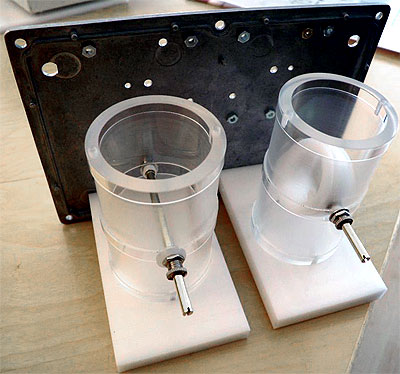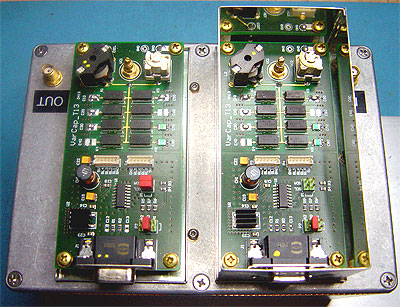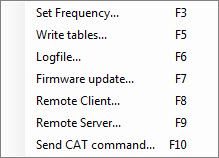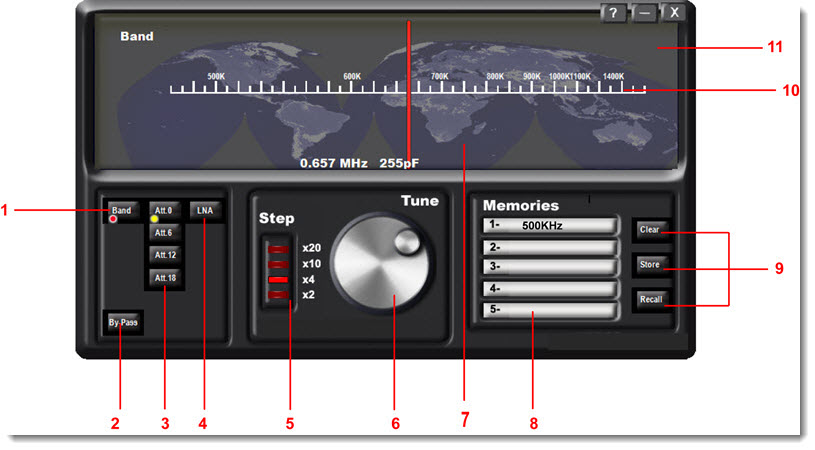MF band Preselector project |
| Home | Projects | Tech Info | Media | Links | Contact | Store |
State of the Art, Passive Radio Preselector for MF band, digital tunable.Covering the European MF band range from 526.5 kHz to 1606.5 kHz |
|---|
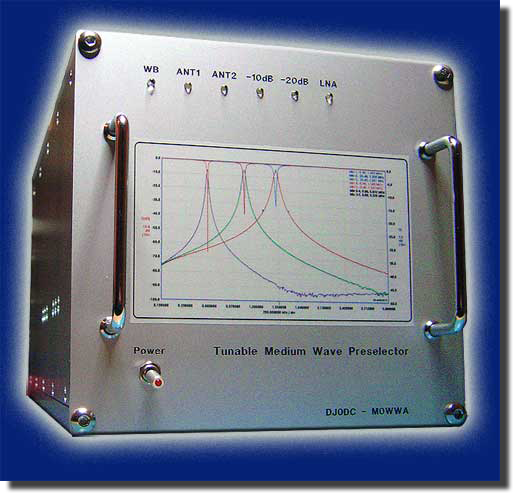 |
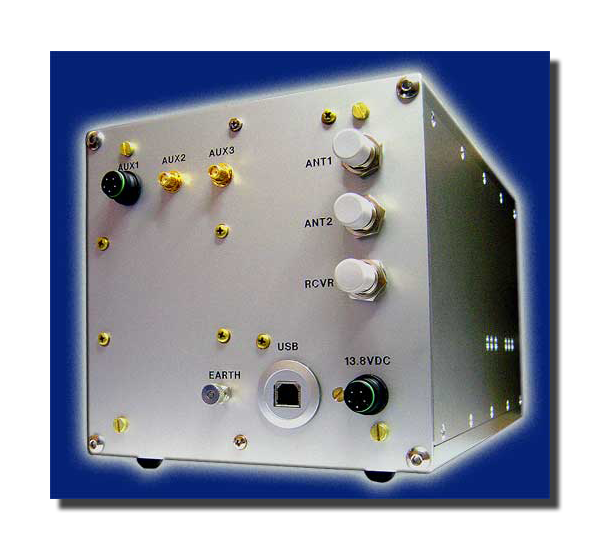 |
Apart from normal Ham radio activities, my friend Jozef Balaz, DJ0DC and I, M0WWA, both share the same interest for DXing on Medium Wave band, aka AM Broadcast band. The Problem.
|
|
|
The Design.Due it is not a commercial project we enjoyed its design whitout budgetary constraint. |
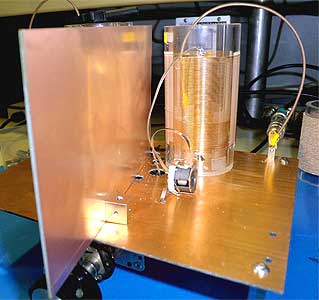 |
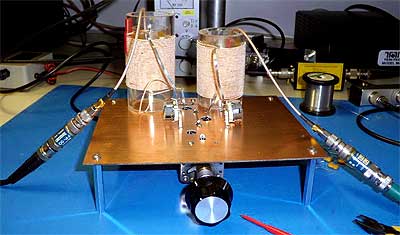 |
Preliminary tests. |
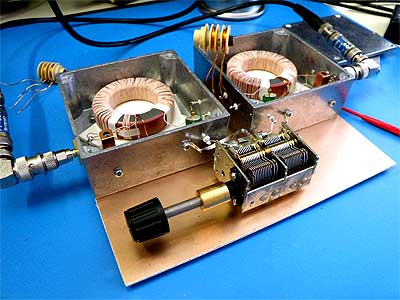 |
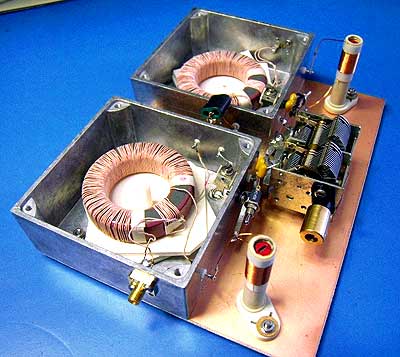 |
Testing a BPF build with toroidal iron core coils. |
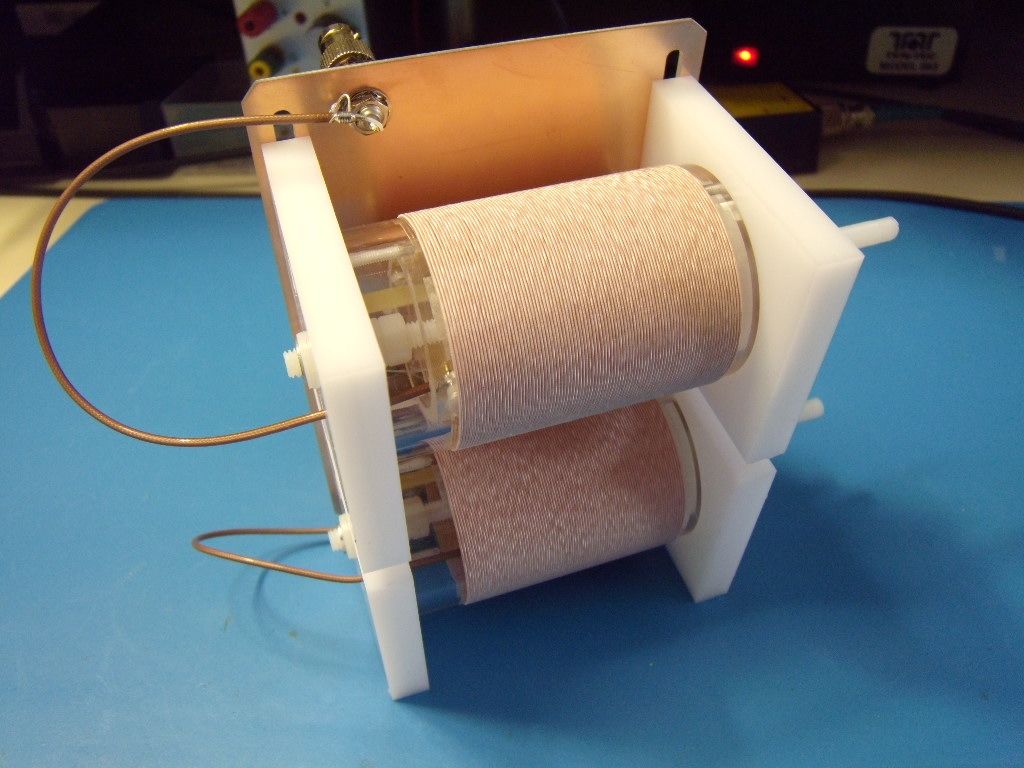 |
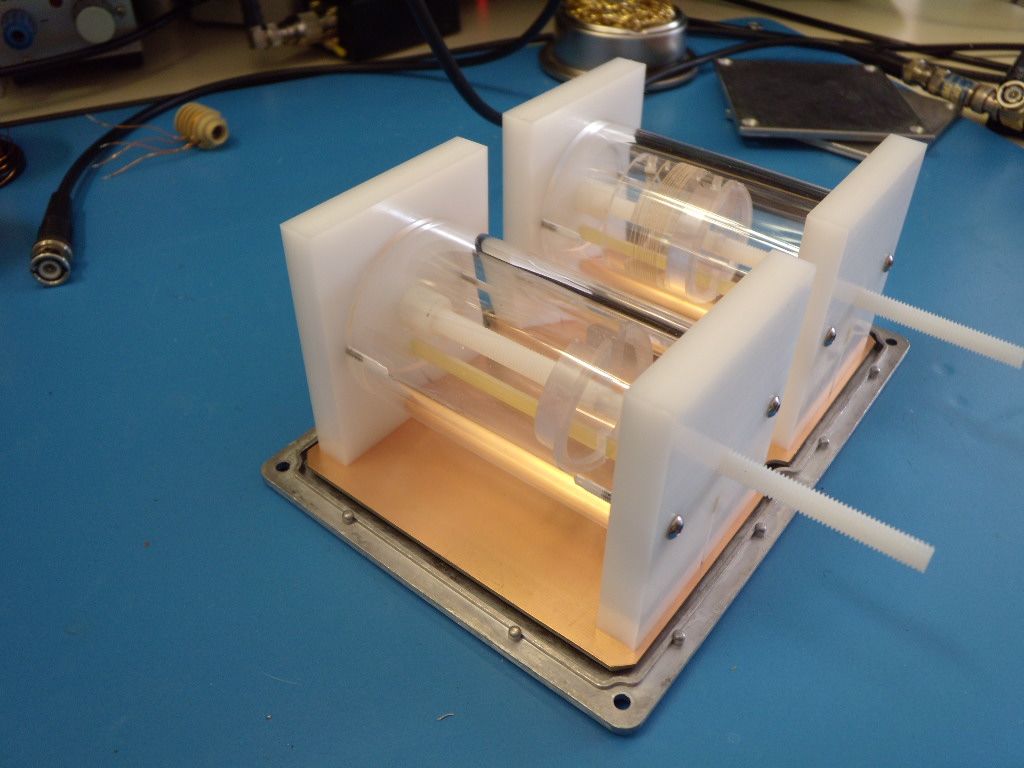 |
LC tank circuit air coils. Testing mutual coupling linear adjusting. |
 |
 |
Testing the digital variable tuning capacitor. |
Testing coils with HP 4342A Q meter. |
|
|
Finally after near two years of hard work the MW band Preselector project was completed. |
|
|
The Circuitry.MW band Preselector architecture.(click on picture icon to enlarge) |
MW band Preselector response plot..(click on picture icon to enlarge) |
Referring to the above architecture diagram, the MW band Preselector circuitry comprises several modules build around a high selective band pass filter all assembled in a special made to order aluminium enclosure of 280x165x155mm (11.023x6.496x6.102 inch) in size. The Preselector total weight is 3.5Kg. |
|
|
|
The switching module.The switching module takes care of the inputting/outputting signals as well as their internal addressing. The switching module features selection for two antenna inputs, 0dB, 10dB, 20 dB and 30 dB step attenuator, build around MiniCircuits PAT series attenuator cells, preselector by-pass function and signal addressing from/to the BPF module. All switching functions are handled by the on board preselector microcontroller module via I2C bus, digital communication protocol system. A multipolar connector carrying control signals and power supply is included A total of seven, professional grade, Axicom HF3-56 RF relays are used as switching devices providing negligible signal losses. SMA type, RF connectors and RG-316 low loss coaxial cable for interconnection with other modules are used. The switching module is assembled on a Duroid 5880 PTFE material grade laminate, gold plated for high RF conductivity PCB, carefully designed to minimise crosstalk among signal paths. The whole switching set is mounted in a TEKO high frequency grade, hot tin-plated steel with finger-flanged lid enclosure in order to assure a good shielding. |
|
|||
|
|
The Band Pass Filter module.The BPF is the core of the preselector. Finding the best circuit configuration took lots of testing time and patience.
|
Variocoupler BPF diagram .(click on picture icon to enlarge)
|
|||
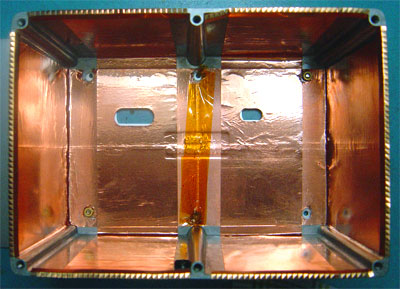 |
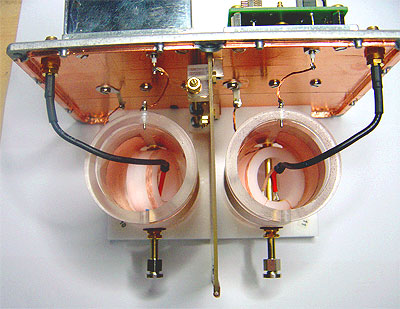 |
|||
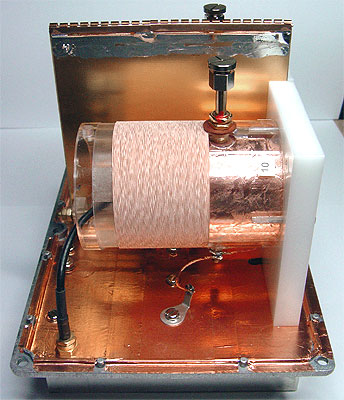 |
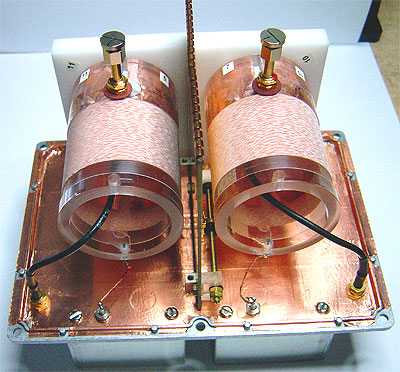 |
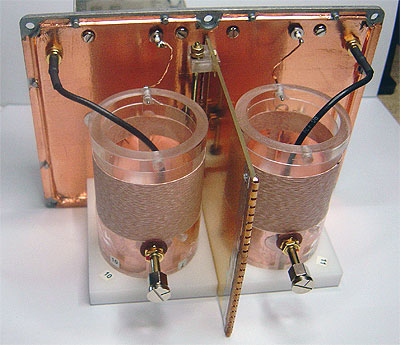 |
Digital Variable Capacitors. (DVC)
|
|
|||
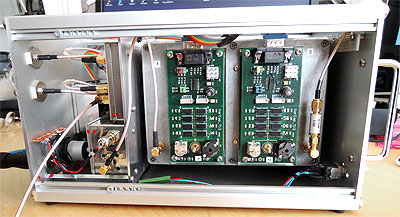 |
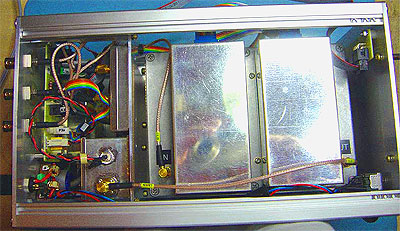 |
|
|
The Low Noise Amplifier module. (LNA)The LNA is based on a high dynamic range GALI-74 MMIC device from MiniCircuits that offers a gain of 25dB and a noise figure of 2,7dB.
The LNA is controlled from the preselector on board microcontroller. When switched Off the LNA is by-passed.. |
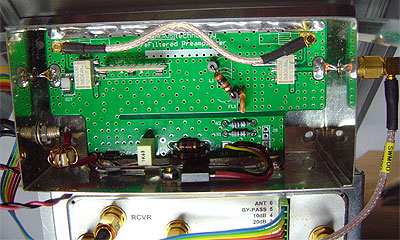 |
|||
|
|
The Microcontroller module. (uC)The on board uC handles all preselector functions. A 18F2455 PIC microcontroller from Microchip is used. It incorporates a full speed (v2.0) USB peripheral to communicate with the PC. via Virtual Com Port providing to the user with remote control from dedicated Graphic User Interface (GUI). Features such as preselector tracking from the main receiver, via CAT commands communication protocol, Network connectivity, frequency calibration and several more auxiliary functions are provided by the uC. The uC communicates with other preselector modules via I2C bus digital communication protocol system and/or logic digital ports. Also the uC features, In circuit serial programming (ICSP). A suitable connector on board lets to program the uC firmware without remove it from the module. A carefully PCB design includes strong power supply decoupling circuitry. The uC module is located in an well shielded enclosure avoiding introducing noise generated by the microprocessor itself and the noisy USB bus. |
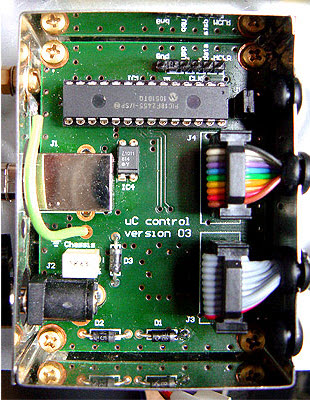 |
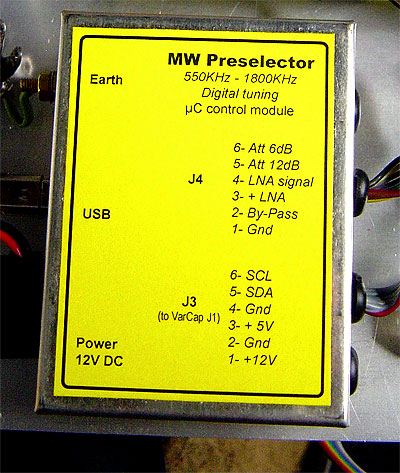 |
|||
|
|
The Software.
A PIC microcontroller firmware and a PC software application running under Windows OS were developed specially for the MW band Preselector. The user remotely commands the MW band Preselector by means of the Graphic User Interface (GUI) console on a PC. In addition to the GUI controls a context menu provides additional features and utilities. The application console runs under Windows (32 & 64 bits) operate systems. By default, the MW band preselector application starts in by-pass state on power-on. In this state, all controls are disabled except the antenna selection and the context menu. The software application includes a calibration table file needed by the microcontroller on board to translate frequency commands into tune capacity values. If it is needed the user can edit the file and recalibrate the preselector with the aid of a signal generator. |
Context menu. |
Calibration table file. |
The Graphic User Interface (GUI) |
1- Band selection. 2- By-Pass. 3- Input attenuator. 4- Low Noise Amplifier. LNA ON/OFF. 5- Tuning step. x2, x4, x10, x20. 6- Tuning knob. |
8- Mnemonic text box. A brief caption can be written in the text boxes. Five memories can be stored. 9- Memory management. 10- Frequency scale. Frequency references on the scale are updated in accordance with the frequency calibration tables. 11- Context menu. |
|
|
| Home | Projects | Tech Info | Media | Links | Contact | Store |
Copyright MMVI by Juan Jose de Oņate M0WWA, Webmaster |
For any comments regarding this web site, please e-mail me. |

